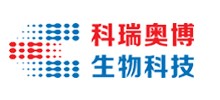| Known as | T-cell immunoreceptor with Ig and ITIM domains;;VSIG9; VSTM3;TIGIT;V-set and transmembrane domain-containing protein 3;V-set and immunoglobulin domain-containing protein 9 |
|---|---|
| Derived from | Human cells |
| Purity | Greater than 95% as determined by reducing SDS-PAGE. |
| Formulation | Lyophilized from a 0.2 μm filtered solution of PBS, pH7.4. |
| Shipping | The product is shipped at ambient temperature. |
| Storage | Lyophilized protein should be stored at < -20°C, though stable at room temperature for 3 weeks.Reconstituted protein solution can be stored at 4-7°C for 2-7 days.Aliquots of reconstituted samples are stable at < -20°C for 3 months |
| Reconstitution | Always centrifuge tubes before opening. Do not mix by vortex or pipetting. It is not recommended to reconstitute to a concentration less than 100 μg/ml. Dissolve the lyophilized protein in ddH2O. Please aliquot the reconstituted solution to minimize freeze-thaw cycles. |
| Endotoxin | Less than 0.1 ng/ug (1 IEU/ug) as determined by LAL test. |
| Background | T cell immunoreceptor with Ig and ITIM domains (TIGIT) is a member of the CD28 family within the Ig superfamily of proteins. TIGIT is expressed on NK cells and subsets of activated, memory and regulatory T cells, and particularly on follicular helper T cells within secondary lymphoid organs. It binds to CD155 and Nectin-2 that appear on dendritic cells (DC) and endothelium. Ligation of TIGIT on T cells down-regulates TCR-mediated activation and subsequent proliferation, while NK cell TIGIT ligation blocks NK cell cytotoxicity. Through CD155 and Nectin-2, which also interact with DNAM-1/CD226 and CD96/Tactile, TIGIT is part of an interacting network of Ig superfamily members that may augment or oppose each other. In particular, TIGIT binding to CD155 can antagonize the effects of DNAM1. |
实验案例

